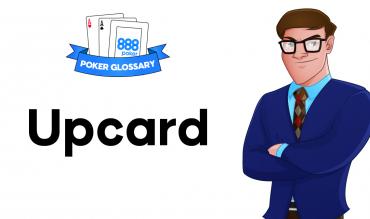What Is an Upcard in Poker? Meaning & Strategy
Stud games do not make use of community cards (with one specific exception – see glossary entry community cards) but this does not mean that there are no cards which are visible to the entire table. Through the seven streets in a stud poker hand, players are dealt a combination of upcards in poker and downcards. Although an upcard in poker belongs exclusively to the player (other players can’t use it), it is visible to the entire table.
On third street (the first betting round), players are dealt two downcards and one upcard. On each of the fourth, fifth, and sixth streets, players are dealt one up-card. The final card is dealt on seventh street (aka “the river”) and is a down card. Stud players are hence dealt a total of seven cards throughout the hand (provided they don’t fold), and that hand is comprised of 3 downcards and 4 upcards.
Stud hands are often represented as follows where the downcards are shown in brackets. (xx)xxxx(x).
For example “On third street I was dealt the (Kc2s)3h”
Example of Upcard used in a sentence -> A player’s upcards in stud are typically referred to as his ‘board’.
How to Use Upcards in Poker – Stud Strategy & Tips
Upcards in poker play an integral role in Stud strategy, helping players make better decisions. Here are three important reasons we should pay attention to all of the upcards on the table.
1. They help us make estimates regarding the strength of our opponent’s holding. (We can see four of his seven cards since they are upcards).
2. They are the key to understanding how our opponent perceives us on a given hand. (If our upcards give the impression of strength our opponent will be more likely to give us credit).
3.Poker upcards provide key information about which cards are left in the deck and how many outs we are likely to have. (If several players with clubs folded on earlier streets then we know our club-draw is less likely to hit).
See Also


